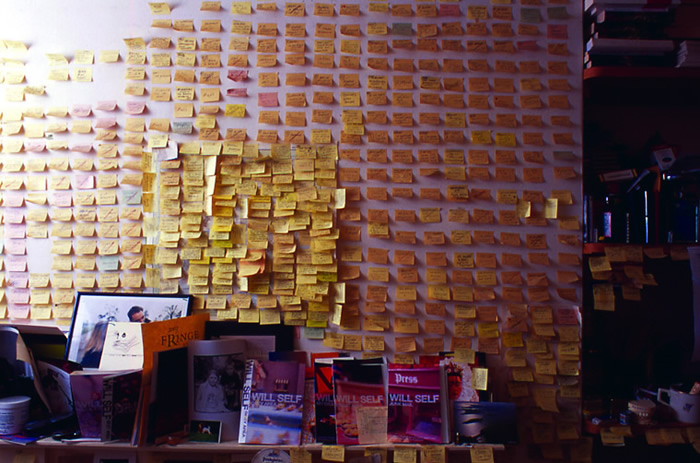What a lot of skeuomorphs there are around nowadays – once you begin noticing them, they crop up everywhere. A skeuomorph, for those of you not design-savvy, is any derivative object that treats as ornamental elements that were functional in the original. One of my favourite examples is Anaglypta wallpaper, which I didn’t know – until I was told by the director of the National Gallery, no less – owes its raised ridging and epidermal feel to its origin in the tooled hides that adorned the walls of the wealthy in the 16th century. More modern skeuomorphs would include electric-light fitments designed to resemble candles (complete with artificial blobs of wax), and the half-timbered aspect of the Morris Traveller, that Anglo-Saxon hovel of mid-20th-century automobiles.
It is with the advent of computerised technology that the current obsession with the skeuomorph really gets going, though. I remember the first edition of Adobe Page-Maker, which I used in the late 1980s on my Mac Classic computer (remember them? So little and chunky, with the integrated CPU and VDU unit just like an early … television); when you booted it up you were treated to a graphic showing a medieval monk illuminating a manuscript. Other stand-out computer skeuomorphs include the envelope pictogram employed in numerous email programs, the stylised buff cardboard folders used on desktops (and those “desktops” themselves) – and even aural skeuomorphs, such as the shutter click my iPhone’s camera makes as it captures yet another blindingly evanescent image, or the odd whooshing noise it emits when it sends an email.
The best way of understanding the skeuomorph is to locate its generation in the transfer from the handmade artefact to the mass-produced product. The term was coined in the 1890s and it was at this discontinuous breakpoint that the new industrial designers attempted to confer on their wallpaper and their ceramics surfaces that were redolent of earlier, more craftsman-like eras. In Britain we had an entire aesthetic movement – Arts and Crafts – that carried the skeuomorph into areas as diverse as architecture, typography, urban planning and hairstyles. But the breakpoint between manufacturing and information technologies strikes me as still more profound: it has opened the skeuomorphic Pandora’s box.
With the transfer of most human manipulations to the realm of the virtual, the skeuomorph has acted in the first instance as an important visual cue for people who can only incoherently conceive of what is, perforce, inchoate. Steve Jobs was the master of this, and the Apple brand – which once seemed the acme of modernity – is now in danger of slip-sliding into mere recency, for, as the online generation grows up, the requirement for computer functionality to be anchored to what was once physically manipulated will surely disappear. As for the madness in all this, it’s an individual derangement that I, dear reader, bequeath to you. While we’re perfectly aware that we live in a society replete with forms of discontinuous technology, and that progress is in nowise written on the body politic, nonetheless we cannot forbear from surveying the current scene as a gestalt of nowness: we look upon roads, cars, people, houses and they cannot – we assume quite unconsciously – be other than the sum of the processes that have evolved into them. However, once we begin to pick out skeuomorphs, the smooth fabric of the present rips and tears. This isn’t simply a matter of anachronism, or the old and the new coexisting, but of time turning back on itself in ways that are altogether non-Euclidean.
The new-old London Routemaster buses that have reintroduced the half-spiralling rear stairway and the back platform, only to seal them behind Perspex because of 21st-century safety anxieties, are beautifully complemented by he-who-reintroduced-them: the Mayor of London, with his Dundee fruitcake chuckles and his Edwardian clubland japes and his rumpy-pumpy antics, is a sort of human skeuomorph, a fact that explains, at least in part, his success. I believe this may well be the avant-garde of personalities and that in the future – courtesy of the web and social media – all human psyches will retain as decorative features the individualism and the individual memories that were once functional attributes. Pip-pip!
